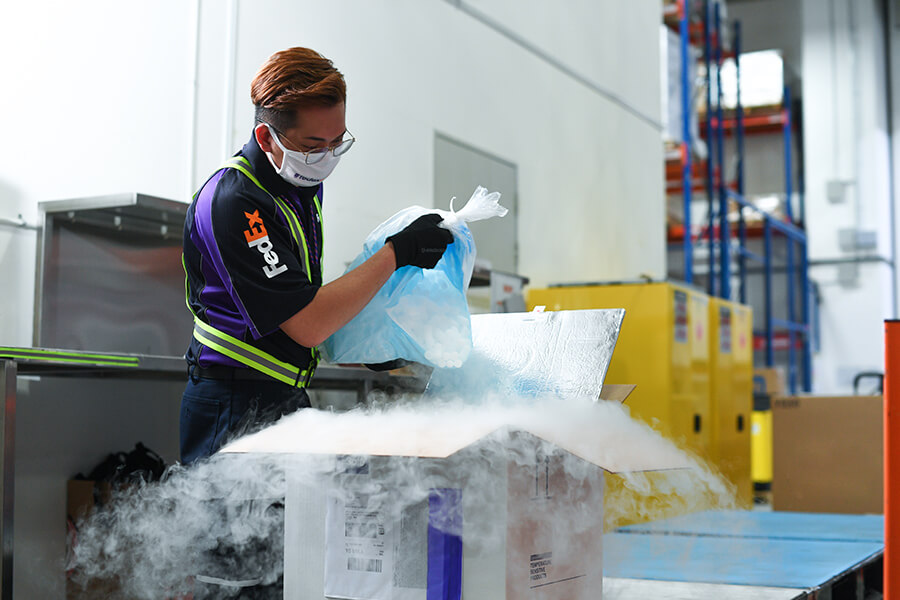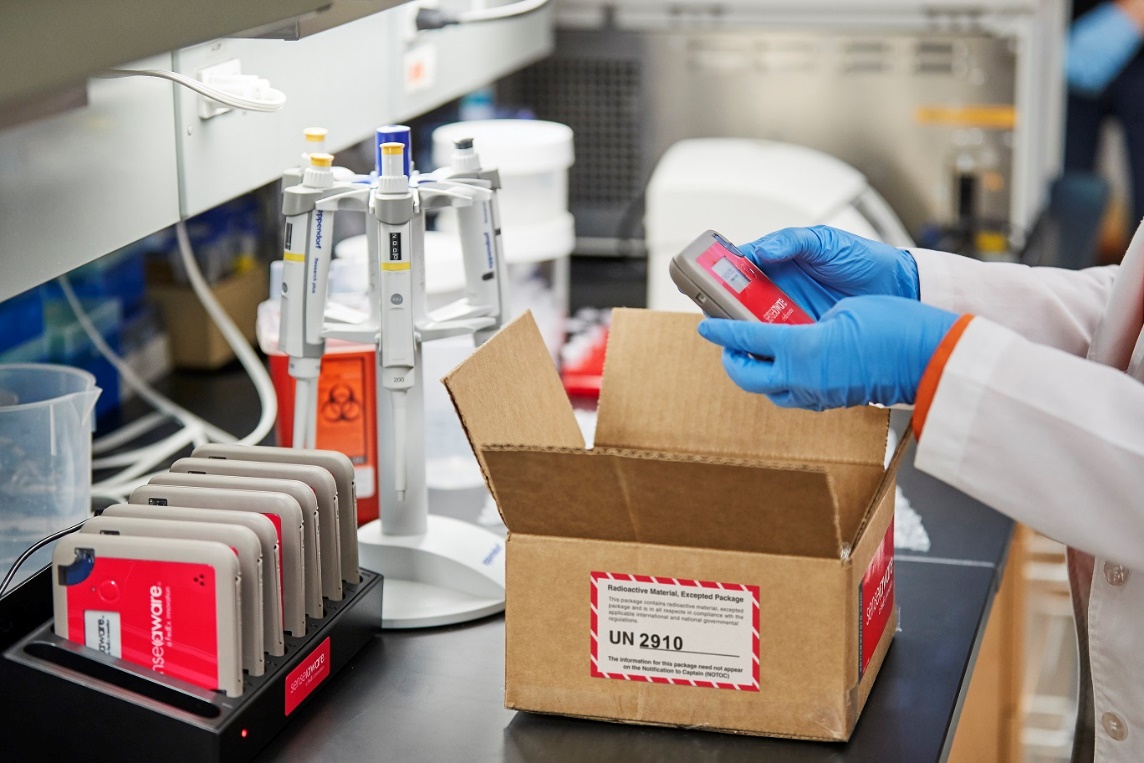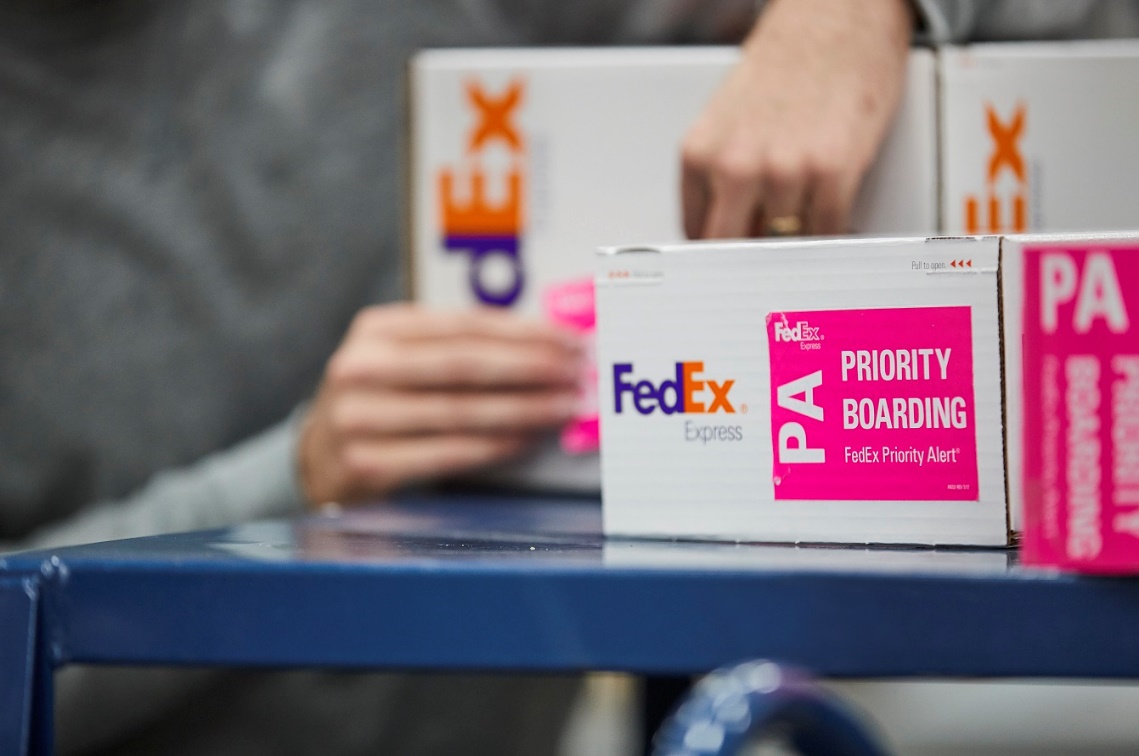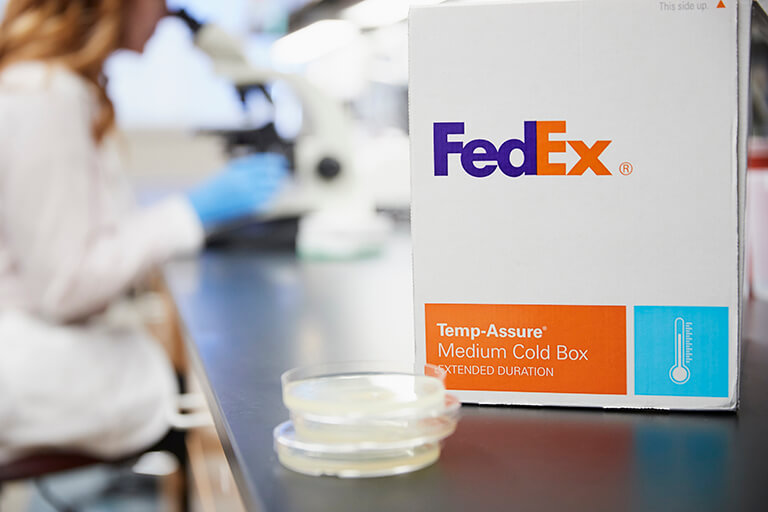Advancing The Next Generation Of Sensor Technology
Healthcare shipments require delicate handling. The right sensor technology ensures products are transported safely.
Advancement in technology is driving change in healthcare logistics every day, and companies are focused on providing next-generation solutions ranging from automation, artificial intelligence (AI), blockchain, and other technologies to protect integrity and ensure safety.
And if you ask healthcare and biopharma industry leaders about the biggest risks in their global supply chain, they’ll usually highlight one priority above all – product safety and security.
Safety is the beating heart of the entire value chain in healthcare. This was made clear during the COVID-19 pandemic, which permanently changed global health care, from accelerating the adoption of new technology to care delivery models. Pharma companies were shipping both clinical trial ingredients and end-products for vaccines, and one breach or failure to ship biopharma products under the required special conditions could have serious consequences.
Safety as the priority
When product recalls and safety concerns occur, they bring the pharma supply chain that supports biologics-based manufacturing into sharp focus. Increasing spotlight on quality and compliance in the last decade is due to changing biopharma industry trends as well as learnings from the pandemic.
Medical and life-science products cannot be transported the same way they were 25 years ago. Issues that can arise range from theft, damage, spoilage, wastage, expiration and weak monitoring of pharma cargo. Falsified, substandard, contaminated or even counterfeit drugs can be a problem too.
And if you ask healthcare and biopharma industry leaders about the biggest risks in their global supply chain, they’ll usually highlight one priority above all – product safety and security.
Safety is the beating heart of the entire value chain in healthcare. This was made clear during the COVID-19 pandemic, which permanently changed global health care, from accelerating the adoption of new technology to care delivery models. Pharma companies were shipping both clinical trial ingredients and end-products for vaccines, and one breach or failure to ship biopharma products under the required special conditions could have serious consequences.
Safety as the priority
When product recalls and safety concerns occur, they bring the pharma supply chain that supports biologics-based manufacturing into sharp focus. Increasing spotlight on quality and compliance in the last decade is due to changing biopharma industry trends as well as learnings from the pandemic.
Medical and life-science products cannot be transported the same way they were 25 years ago. Issues that can arise range from theft, damage, spoilage, wastage, expiration and weak monitoring of pharma cargo. Falsified, substandard, contaminated or even counterfeit drugs can be a problem too.

Drug creation is an extremely complex, time-consuming and expensive process. And it can take years. Sometimes, it can even take a decade. That’s why it’s so important not to derail the entire project at the final, crucial moments.
Every step in the shipping of chemical-based active pharmaceutical ingredients (APIs) and biologics-based ingredients presents challenges that can make or break the integrity of the process. This in turn escalates pressures – and costs – on manufacturers.
The high cost of new APIs is driving a shift to biologics. The growth of biopharma brings added urgency to improve safety. Global biopharma cold chain logistics, valued at USD 17.8 billion in 2023, is expected to grow by CAGR 9% between now and 2033.
So, the burning question is: how can we leverage technology to make a safety-first, quality control obsessed supply chain possible? And in doing so, can we future-proof Asia’s growing role in global pharma manufacturing?
The next generation supply chain is powered by intelligence
All industry sectors have undergone rapid digital transformation. Pharma and biopharma manufacturing are one of the most complex and non-linear supply chains of any sector. Distribution often requires significant temperature controls and specialized packaging.
By changing how we combine the physical supply chain with digital technology such as AI, real-time data analytics and the Internet of Things (IoT), we can create a resilient and reliable supply chain. And logistics and transport can be the key enabler of enhanced operational efficiency.
Every step in the shipping of chemical-based active pharmaceutical ingredients (APIs) and biologics-based ingredients presents challenges that can make or break the integrity of the process. This in turn escalates pressures – and costs – on manufacturers.
The high cost of new APIs is driving a shift to biologics. The growth of biopharma brings added urgency to improve safety. Global biopharma cold chain logistics, valued at USD 17.8 billion in 2023, is expected to grow by CAGR 9% between now and 2033.
So, the burning question is: how can we leverage technology to make a safety-first, quality control obsessed supply chain possible? And in doing so, can we future-proof Asia’s growing role in global pharma manufacturing?
The next generation supply chain is powered by intelligence
All industry sectors have undergone rapid digital transformation. Pharma and biopharma manufacturing are one of the most complex and non-linear supply chains of any sector. Distribution often requires significant temperature controls and specialized packaging.
By changing how we combine the physical supply chain with digital technology such as AI, real-time data analytics and the Internet of Things (IoT), we can create a resilient and reliable supply chain. And logistics and transport can be the key enabler of enhanced operational efficiency.

We can protect the integrity of biologics and chemical compounds by tracking and monitoring the ingredients from supplier to factory. Real time recording and transmitting temperature, time and location means we can deliver reliable data and a clear line of sight at every stage.
End-to-end visibility brings multiple benefits. It can track all the contact points to identify the exact location of any deviation or waste. It can also help predict and solve potential risks along the journey.
We are building a future where innovation equals automatic compliance. Where full visibility becomes standard. Where knowledge and trust are empowered, and speed is continually enhanced.
Next generation sensors – the path to full visibility
Future of innovation and reliability are perhaps best illustrated by the next generation of sensors. Sensors are not new. Pharma and healthcare customers have been using tech like the FedEx SenseAware shipment monitor to track data on temperature, physical shock, route or location alerts, humidity, light exposure, pressure and current location for close to a decade. That way, they can stay in constant contact with their shipment.
End-to-end visibility brings multiple benefits. It can track all the contact points to identify the exact location of any deviation or waste. It can also help predict and solve potential risks along the journey.
We are building a future where innovation equals automatic compliance. Where full visibility becomes standard. Where knowledge and trust are empowered, and speed is continually enhanced.
Next generation sensors – the path to full visibility
Future of innovation and reliability are perhaps best illustrated by the next generation of sensors. Sensors are not new. Pharma and healthcare customers have been using tech like the FedEx SenseAware shipment monitor to track data on temperature, physical shock, route or location alerts, humidity, light exposure, pressure and current location for close to a decade. That way, they can stay in constant contact with their shipment.

The number of sensor-enabled devices are growing, and they are having a transformational impact on digital supply networks. What’s also clear is that smart sensor computing capabilities are strengthening substantially – meaning barriers to smart sensor adoption continue to fall.
Tomorrow’s digitally enabled supply chain enhances safety and security
Most of the sensor data generated today is around shipping conditions and location. But data sets are increasingly being used to make pre-emptive decision-making around safety, spoilage and damage mitigation - as well as optimizing delivery routes in real time.
AI in particular has the potential to transform the biopharma supply chain. It allows the crunching of huge amounts of real-time data. That enables intelligent and pre-emptive recommendations that incorporate weather, traffic conditions and so on, empowering businesses to react sooner rather than later.
Near real-time assessment of the safety and quality of pharma ingredients provides multiple benefits – particularly in matching information flow to physical flow.
One example? FedEx moves large numbers of active containers to transport APIs from North America to a factory in Japan. What are the essential components to make it work?
Having this end-to-end control not only means pharma customers trust in FedEx. It’s essential to safety.
Tomorrow’s digitally enabled supply chain enhances safety and security
Most of the sensor data generated today is around shipping conditions and location. But data sets are increasingly being used to make pre-emptive decision-making around safety, spoilage and damage mitigation - as well as optimizing delivery routes in real time.
AI in particular has the potential to transform the biopharma supply chain. It allows the crunching of huge amounts of real-time data. That enables intelligent and pre-emptive recommendations that incorporate weather, traffic conditions and so on, empowering businesses to react sooner rather than later.
Near real-time assessment of the safety and quality of pharma ingredients provides multiple benefits – particularly in matching information flow to physical flow.
One example? FedEx moves large numbers of active containers to transport APIs from North America to a factory in Japan. What are the essential components to make it work?
- FedEx uses a 24/7 global control tower and state-of-the art technology to monitor shipment progress and conditions throughout the journey to avoid any surprises
- In-house regulatory and quality assurance expertise
- A global network of cold chain facilities for proper product handling
- In case of unforeseen delays, robust contingency plans kick in to protect shipment integrity
Having this end-to-end control not only means pharma customers trust in FedEx. It’s essential to safety.

Making the best use of all the information available and using AI to streamline processes, increase scalability and reliability will drastically change the healthcare landscape. We can look ahead to the day when healthcare could become more affordable by simplifying complex distribution channels and delivering treatment directly to the point of primary care.
We’ll also see more innovative therapy involving biologics and genomic therapy, which in turn will feed into the main goal – better patient care and improved health outcomes.
Whatever the future, logistics services are rapidly evolving due to the power of intelligence and data analytics.
Learn more about the innovative SenseAware technology here.
And find more FedEx healthcare solutions here.
We’ll also see more innovative therapy involving biologics and genomic therapy, which in turn will feed into the main goal – better patient care and improved health outcomes.
Whatever the future, logistics services are rapidly evolving due to the power of intelligence and data analytics.
Learn more about the innovative SenseAware technology here.
And find more FedEx healthcare solutions here.
***


















 The Latest
The Latest